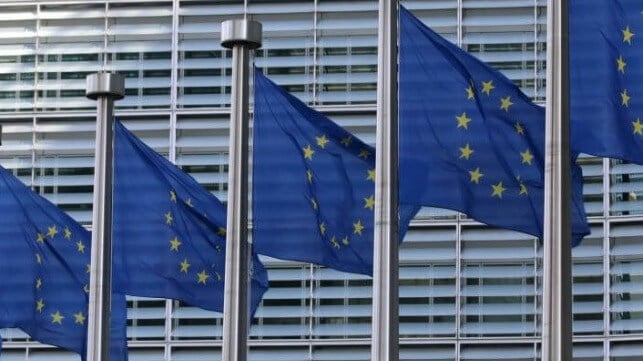As EU ETS Approaches, Debate Begins Over its Loopholes

With the European Union’s Emissions Trading System scheduled to include shipping in 2024, a debate is ongoing over some of its expected loopholes.
The ETS policy requires large ships over 5,000 gross tons loading and unloading cargoes in the European Economic Area (EEA) to monitor and report their related CO2 emissions. However, opinion is divided as to whether the EU ETS as a regional market-based-measure (MBM) is an effective approach to limit emissions from the maritime sector. The EU ETS has proved beneficial to the bloc’s green deal but some maritime players are cautious it could lead to carbon leakage.
An analysis posted in the maritime knowledge-sharing platform Queseas tries to map out critical gaps of the ETS regulation. The study claims enforcement of the EU ETS could allow industry stakeholders financial incentives to avoid voyages in the European Economic Area (EEA) and utilize neighboring non- EU countries as intermediate calls.
For instance, take the case of a modern SOx scrubber fitted Suezmax tanker transporting crude oil from the port of Bonny in Nigeria to Port of Sines in Portugal. For this voyage, the vessel consumes 520 tons of heavy fuel sailing at 12 knots for 13 days. For this amount of fuel, the CO2 emissions are equal to 1,600 tons (as calculated using the EU ETS Carbon emissions methodology).
Taking into account that that 50 percent of emissions apply to ships arriving at an EEA/EU port from a non-EU port, the emissions under the ETS to be considered are 800 tons of CO2. Assuming we use a carbon permit price of $100 per ton of CO2, the additional EU ETS compliance cost for this voyage is equal to $81,000.
However, the result will be different if the vessel uses an alternative pathway, transporting the crude oil from Bonny (non- EU/EEA) and arrive at the destination port of Sines via an intermediate call to a Floating Storage Offloading (FSO) unit within the port limits of Tanger, Morocco (non-EU/EEA). In this case, another Suezmax tanker loads the cargo from the FSO unit and transports it to Port of Sines.
In the first leg of the voyage, Bonny, Nigeria- Tanger, Morocco, there is no need to surrender any allowances for the EU ETS scheme.
The second part is Tanger- Sines, Portugal, with the vessel consuming approximately 40 tons of heavy fuel, equal to 125 tons of CO2 emissions. Taking into account that 50 percent of emissions apply to ships arriving at an EU/EEA port from a non- EU/EEA port, the emissions to be considered under the EU ETS are 60 tons of CO2 . This translates to an overall EU ETS compliance cost of $6,200.Thus, the alternative scenario reduces the ETS cost by 92 percent.
In this view, the study concludes that this loophole could open a business opportunity for several parties, including non-EU countries bordering the bloc, ship management companies and oil trading companies. In addition, it is also likely to change the oil import/transportation landscape of Europe, in some instances leading to revenue loss for the EU ETS and ultimately carbon leakage.
It is important to highlight that this loophole affects dry and liquid shipping. As for container shipping, the EU ETS regulation provides adequate measures to curb evasive practices. Container ships that make stops at transshipment ports located outside of the EU/EEA but within 300 nautical miles of an EU/EEA port must include 50 percent of the emissions generated during the entire journey to that port in their calculations.
Commenting on the impact of EU ETS on ship operations and trading patterns in Europe, global head of research for the UK shipbroker Simpson Spense Young (SSY) Dr. Roar Adland, said the impact depends on a number of factors.
“Let assume that the EUA (carbon credit) price is even $100 per ton of CO2 or a $300/ton fuel equivalent. On a time/trip charter (TC) basis, will this make any difference to operations and emissions in practice? Probably not. In the past 13 months, VLSFO fuel prices have varied in a much larger $600/ton range - twice the impact of ETS - without any material changes in vessel speeds or otherwise,” argued Dr. Adland.
But Dr. Adland predicts that the higher cost of ocean transportation for intra- EU voyages and EU imports/exports (in the order of $0.5/ton to $2/ton) will have a negative impact on trade, particularly for low-value cargoes and typical price arbitrage trades.
